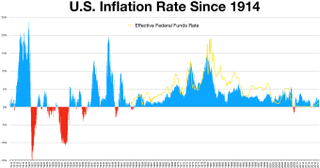This article does not cite any sources .(June 2019) (Learn how and when to remove this template message) |
Production optimization is the practice of making changes or adjustments to a product to make it more desirable.
This article does not cite any sources .(June 2019) (Learn how and when to remove this template message) |
Production optimization is the practice of making changes or adjustments to a product to make it more desirable.
A product has a number of attributes. For example, a soda bottle can have different packaging variations, flavors, nutritional values. It is possible to optimize a product by making minor adjustments. Typically, the goal is to make the product more desirable and to increase marketing metrics such as Purchase Intent, Believability, Frequency of Purchase, etc.
Multivariate optimization is one of the most common methods for product optimization. In this method, multiple product attributes are specified and then tested with consumers.
Due to complex interaction effects between different attributes (for example, consumers frequently associate certain flavors with packaging colors), it is problematic to use mathematical methods, such as Conjoint Analysis, typically used in industrial process optimization.
More recently companies started to adopt Evolutionary Optimization techniques for Product optimization. Evolutionary algorithms (such as IDDEA) are used to optimize products, concepts and messaging.
IDDEA is a quantitative method used by Affinnova, a market research company. This method involves generating and presenting a number of design alternatives to persons who are participating in the design, selection, or market research exercise.

Price discrimination is a microeconomic pricing strategy where identical or largely similar goods or services are transacted at different prices by the same provider in different markets. Price discrimination is distinguished from product differentiation by the more substantial difference in production cost for the differently priced products involved in the latter strategy. Price differentiation essentially relies on the variation in the customers' willingness to pay and in the elasticity of their demand.
Concept testing is the process of using surveys to evaluate consumer acceptance of a new product idea prior to the introduction of a product to the market. It is important not to confuse concept testing with advertising testing, brand testing and packaging testing; as is sometimes done. Concept testing focuses on the basic product idea, without the embellishments and puffery inherent in advertising.

A Consumer Price Index measures changes in the price level of market basket of consumer goods and services purchased by households.
In marketing, product bundling is offering several products or services for sale as one combined product or service package. It is a common feature in many imperfectly competitive product and service markets. Industries engaged in the practice include telecommunications services, financial services, health care, information and consumer electronics. A software bundle might include a word processor, spreadsheet, and presentation program into a single office suite. The cable television industry often bundles many TV and movie channels into a single tier or package. The fast food industry combines separate food items into a "meal deal" or "value meal".
Sales Promotion is one of the elements of the promotional mix.. Sales promotion uses both media and non-media marketing communications for a pre-determined, limited time to increase consumer demand, stimulate market demand or improve product availability. Examples include contests, coupons, freebies, loss leaders, point of purchase displays, premiums, prizes, product samples, and rebates.

Pricing is the process whereby a business sets the price at which it will sell its products and services, and may be part of the business's marketing plan. In setting prices, the business will take into account the price at which it could acquire the goods, the manufacturing cost, the market place, competition, market condition, brand, and quality of product.

'Conjoint analysis' is a survey-based statistical technique used in market research that helps determine how people value different attributes that make up an individual product or service.

Consumer behaviour is the study of individuals, groups, or organizations and all the activities associated with the purchase, use and disposal of goods and services, including the consumer's emotional, mental and behavioural responses that precede or follow these activities. Consumer behaviour emerged in the 1940s and 50s as a distinct sub-discipline in the marketing area.
Online shopping is a form of electronic commerce which allows consumers to directly buy goods or services from a seller over the Internet using a web browser. Consumers find a product of interest by visiting the website of the retailer directly or by searching among alternative vendors using a shopping search engine, which displays the same product's availability and pricing at different e-retailers. As of 2016, customers can shop online using a range of different computers and devices, including desktop computers, laptops, tablet computers and smartphones.

A water supply system or water supply network is a system of engineered hydrologic and hydraulic components which provide water supply. A water supply system typically includes:
In real estate and property studies, the hedonic regression is often used to study the impact of a number of factors that affect housing prices In economics, hedonic regression or hedonic demand theory is a revealed preference method of estimating demand or value. It breaks down the item being researched into its constituent characteristics, and obtains estimates of the contributory value of each characteristic. This requires that the composite good being valued can be reduced to its constituent parts and that the market values those constituent parts. Hedonic models are most commonly estimated using regression analysis, although more generalized models, such as sales adjustment grids, are special cases of hedonic models.
Supply-chain optimization is the application of processes and tools to ensure the optimal operation of a manufacturing and distribution supply chain. This includes the optimal placement of inventory within the supply chain, minimizing operating costs. This often involves the application of mathematical modelling techniques using computer software.
In marketing and retail, product sabotage is a practice used to encourage the customer to purchase a more profitable product or service as opposed to cheaper alternatives. It is also the practice where a company attempts to aim different prices at different types of customer. There are several methods used in achieving this:

Visual merchandising is the practice in the retail industry of developing floor plans and three-dimensional displays in order to maximize sales.
Dynamic pricing, also referred to as surge pricing, demand pricing, or time-based pricing is a pricing strategy in which businesses set flexible prices for products or service based on current market demands. Businesses are able to change prices based on algorithms that take into account competitor pricing, supply and demand, and other external factors in the market. Dynamic pricing is a common practice in several industries such as hospitality, travel, entertainment, retail, electricity, and public transport. Each industry takes a slightly different approach to repricing based on its needs and the demand for the product. Dynamic pricing can be unpopular with consumers and favours the wealthy, who are less likely to be priced out of a market when there is high demand, such as for electricity during a heat wave or for food during a famine.
TURF Analysis, an acronym for "Total Unduplicated Reach and Frequency", is a type of statistical analysis used for providing estimates of media or market potential and devising optimal communication and placement strategies given limited resources. TURF analysis identifies the number of users reached by a communication, and how often they are reached.

A/B testing is a randomized experiment with two variants, A and B. It includes application of statistical hypothesis testing or "two-sample hypothesis testing" as used in the field of statistics. A/B testing is a way to compare two versions of a single variable, typically by testing a subject's response to variant A against variant B, and determining which of the two variants is more effective.
Multi-objective optimization is an area of multiple criteria decision making that is concerned with mathematical optimization problems involving more than one objective function to be optimized simultaneously. Multi-objective optimization has been applied in many fields of science, including engineering, economics and logistics where optimal decisions need to be taken in the presence of trade-offs between two or more conflicting objectives. Minimizing cost while maximizing comfort while buying a car, and maximizing performance whilst minimizing fuel consumption and emission of pollutants of a vehicle are examples of multi-objective optimization problems involving two and three objectives, respectively. In practical problems, there can be more than three objectives.
Coal blending is the process of mixing coals after coal has been mined to achieve quality attributes that are desirable for the coal’s intended application. The quality attributes that are most important in blending will differ from one mine site to another and also depend on how the coal seams vary in quality and their final intended use. In thermal coals, quality attributes of interest often include ash, volatile matter, total Sulfur, and gross calorific value. For coking coals, additional attributes are sometimes considered including crucible swelling number, fluidity, and RoMax.
In machine learning, hyperparameter optimization or tuning is the problem of choosing a set of optimal hyperparameters for a learning algorithm. A hyperparameter is a parameter whose value is used to control the learning process. By contrast, the values of other parameters are learned.